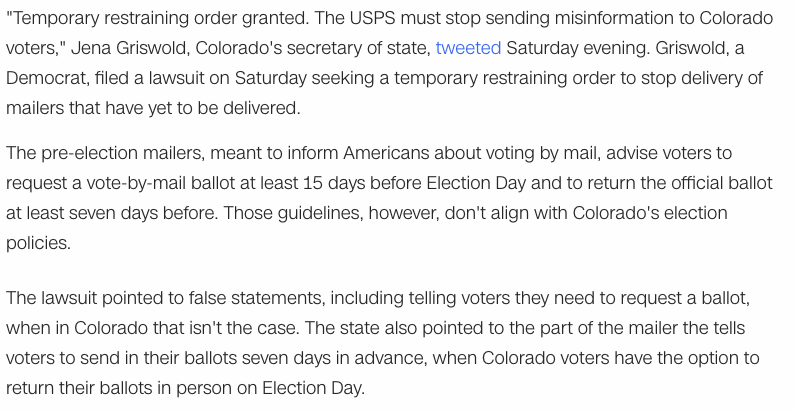
Early this morning, @realDonaldTrump announced that he and @FLOTUS tested positive for COVID-19. Since then, there has been A LOT of speculation and reactions circulating. REMEMBER: this is a developing, breaking-news story. Here’s what to do and what NOT to do to follow it:
https://twitter.com/realDonaldTrump/status/1311892190680014849
Read AT LEAST 3-4 reliable sources. When possible, seek out primary sources too. This includes updates from the @WhiteHouse or the @JoeBiden campaign on contact tracing. The more sources you read, the better you’ll understand the facts and the full scope of the story.
Avoid conjecture conversations or stories about the “what ifs.” Focus on the information we have right now and updates rooted in facts as they become available. Doom scrolling through nightmare scenarios will not be beneficial to you or the people who read the content you share.
If a post triggers a strong emotional reaction, that’s a sign of potential misinformation. This is a heated story, but stop and think about what you read before sharing. Is it based on facts? #ThinkBeforeYouShare
Keep in mind that it’s okay to take a break from social media and avoid the noise today. Come back in 1-2 days and read several well-developed articles beyond the headlines, from top to bottom. Then, you’ll be able to get the full scope of the story.
This big of a story is a ripe opportunity for a bad foreign actor to hide behind an account that increases division, creates fear, and fuels the fire of misinformation. Ask yourself “who is behind the information, can I trust them?”
Be aware of conspiracy theories and conspiracy-like content. Don’t let speculation that isn’t rooted in fact influence your decisions, especially when it comes to voting in #Election2020.
With every story, we recommend using these three questions from @SHEG_Stanford to verify information online:
1. Who is behind the information?
2. What is the evidence?
3. What are other sources saying?
1. Who is behind the information?
2. What is the evidence?
3. What are other sources saying?

For more tips on handling coronavirus misinformation, watch this PSA from our MediaWise ambassadors.
• • •
Missing some Tweet in this thread? You can try to
force a refresh







